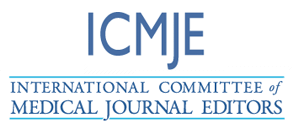Oral and Periodontal Manifestation of Smokeless Tobacco (SLT) Users in Khartoum Locality 2022-2023
DOI:
https://doi.org/10.55677/IJCSMR/V4I2-06/2024Keywords:
Smokeless tobacco, snuff, periodontitis, periodontal disease, mucosal changes, inflammation.Abstract
Back ground: Smokeless Tobacco (SLT) can cause oral mucosal lesions such as keratosis, gingival inflammation, periodontal inflammation, alveolar bone damage, dental caries, tooth abrasion, staining of tooth structure, dysplasia, and oral cancer. Tobacco has been linked to severe consequences for overall health.
Objective: To identify the oral and periodontal manifestation of smokeless tobacco (SLT) users in Khartoum locality.
Methodology: A descriptive cross-sectional hospital based study was done among 80current smokeless tobacco patients attending the outpatients and periodontology clinic in ACTH (Academy Charity Teaching Hospita), KDTH(Khartoum Dental Teaching Hospital), and alhekmah health center from January to March 2023, patients undergo oral examination after obtaining an informed consent, data collected using online Google form, pretested questionnaire and interviews. Data collected using Microsoft Excel spreadsheets and analyzed by SPSS version 23.
Results: The study included mostly male participants (97.5%), aged 18-29 years old (31.3%). With lower education levels (31.3%). and working as unskilled workers (47.5%). Most participants put the snuff at buccal mucosa (42.5%), used for less than 10 years (41.3%), for 1-5 minutes (52.5%), and 1 pack per day (56.3%). The majority had dental caries (66.3%) with class I predominance (53.8%), inflammation (97.5%), recession (67.5%), staining (78.8%), and halitosis (73.8%). Mucosal hypertrophy was the most common mucosal change (71.3%). There was a statistical association between start time and plaque index (P value = 0.008), and quantity in packs and pocket depth (P value = 0.013).
Conclusions: The study revealed that SLT has sever and considerable adverse effects on oral health and periodontal tissues.
References
Muthukrishnan A, Warnakulasuriya S. Oral health consequences of smokeless tobacco use. Indian J Med Res. 2018 Jul; 148(1):35.
Definition of tobacco - NCI Dictionary of Cancer Terms - NCI [Internet]. [cited 2022Oct 8]. Available from: https://www.cancer.gov/publications/dictionaries/cancerterms/def/tobacco
Walsh PM, Epstein JB. The Oral Effects of Smokeless Tobacco. J Can Dent Assoc 2000; 66:22-5.
Idris AM, Prokopczyk B, Hoffmann D. Toombak: a major risk factor for cancer of the oral cavity in Sudan. Prev Med. 1994 Nov; 23(6):832–9.
Goel K, Sharma S, Baral DD, Agrawal SK. Current status of periodontitis and its association with tobacco use amongst adult population of Sunsari district, in Nepal. BMC Oral Health. 2021; 21(1):66.
Shah R, Ghosh S, Singh A, Wazir S, Singh H, Gupta R, et al. Effect of tobacco chewing on periodontal health in Parsa, Nepal: A comparative study. J Dent Res Rev. 2021 Jul 31;8:102–6.
Dave AK, Dave B, Thakke V, Joshi N, Katariya M, Patel H. Evaluation of periodontal health among tobacco chewers, smokers and nontobacco users: A case–control study.Advances in Human Biology.2021;11(1).
Periodontitis - Symptoms and causes - Mayo Clinic [Internet]. [cited 2022 Oct 8].
Available from:https://www.mayoclinic.org/diseasesconditions/periodontitis/symptoms-causes/syc-20354473
Katuri KK, Alluri JK, Chintagunta C, Tadiboina N, Borugadda R, Loya M, et al.
Assessment of Periodontal Health Status in Smokers and Smokeless Tobacco Users: A Cross-Sectional Study. J Clin Diagn Res JCDR. 2016 Oct;10(10):ZC143–6.
Memon M, Shaikh S, Siddiqui MI, Memon S, Anwer A, Ishaque E. Association
between Chewable Tobacco Consumption and Oral Hygiene Habits on Periodontal
Health. J Pharm Res Int. 2021 Sep 9; 33:107–13.
Greer RO. Oral Manifestations of Smokeless Tobacco Use. Otolaryngol Clin North Am. 2011 Feb 1; 44(1):31–56.
Mirbod SM, Ahing SI. Tobacco-associated lesions of the oral cavity: Part I.
Nonmalignant lesions. J Can Dent Assoc. 2000 May; 66(5):252–6.
13- Agrawal N, Aggarwal A, Gupta ND, Tewari RK, Gupta J, Garg AK. Oral health consequences of use of smokeless tobacco in North India - a cross-sectional survey. Pesqui Bras Odontopediatria Clín Integr. 2021; 21:e0114
14-Athar S, Arora SA, Kalsi R, Saurav K, Arora V, Baro K. Prevalence of periodontitis and its association with smokeless tobacco (SLT) Use amongst the adult population of Greater Noida, India - A cross-sectional study. Indian J Dent Res Off Publ Indian Soc Dent Res. 2022; 33(4):397–401.
15-Alshayeb M, Mathew A, Varma S, ELkaseh A, Kuduruthullah S, Ashekhi A, Habbal A WA. Prevalence and distribution of oral mucosal lesions associated with
tobacco use in patients visiting a dental school in Ajman.Oncology and Radiotherapy.2019;1(46):029-033.
16- Binmadi N, Harere L, Mattar A, Aljohani S, Alhindi N, Ali S, et al. Oral lesions
associated with smokeless tobacco users in Saudi Arabia: Single center cross-sectional study. Saudi Dent J. 2022; 34(2):114–20.
17-Singh GP, Rizvi I, Gupta V, Bains VK. Influence of smokeless tobacco on periodontal health status in local population of north India: A cross-sectional study. Dent Res J. 2011; 8(4):211–20.
18-Anand PS, Mishra S, Nagle D, Kamath NP, Kamath KP, Anil S. Patterns of Periodontal Destruction among Smokeless Tobacco Users in a Central Indian Population. Healthcare 2021 ;9 (744);1-11.
19- Nagarajappa S, Prasad KV.Oral Microbiota, Dental Caries and Periodontal Status in Smokeless Tobacco Chewers in Karnataka, India: A Case-control Study. Oral Health Prev Dent.2010;8(3):211-9.
Downloads
Published
Issue
Section
License
Copyright (c) 2024 International Journal of Clinical Science and Medical Research

This work is licensed under a Creative Commons Attribution 4.0 International License.











